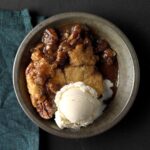Embark on a culinary journey into the world of keto-friendly baking! Imagine sinking your teeth into fluffy, flavorful bread without sacrificing your commitment to a low-carb, gluten-free lifestyle. This exploration unveils a collection of delectable recipes, meticulously crafted to satisfy even the most discerning keto enthusiast. We’ll delve into the secrets of creating bread with alternative flours, exploring textures ranging from airy and light to delightfully dense, all while keeping those carb counts impressively low. Prepare to discover the perfect balance of taste and dietary needs, transforming your keto experience with each delicious slice.
From understanding the nuances of different low-carb flours like almond, coconut, and flaxseed meal to mastering the art of achieving the ideal texture and flavor, this guide provides a comprehensive toolkit for keto bread baking success. We’ll unravel the mysteries of adapting recipes for varying dietary needs, offering step-by-step instructions and troubleshooting tips to ensure your baking adventures are consistently rewarding. Prepare to explore creative topping combinations, unlocking a world of savory and sweet possibilities to elevate your keto bread creations to new heights.
Step-by-Step Baking for a Selected Recipe
This section provides a detailed, step-by-step guide for baking a delicious and easy cloud bread recipe, a keto and gluten-free favorite. This recipe uses minimal ingredients and yields light, fluffy bread perfect for sandwiches or as a side. The visual descriptions will help you achieve perfect results.
The following instructions will guide you through each stage of the process, from preparing the ingredients to achieving that perfect cloud-like texture. Pay close attention to detail, especially concerning the whipping of the egg whites, as this is crucial for the bread’s airy consistency.
Ingredients and Preparation
Before beginning, gather all your ingredients and ensure they are at room temperature. This will ensure proper emulsification and prevent issues with the egg whites whipping correctly. Room temperature eggs whip up to a much stiffer peak than cold eggs. The ingredients are simple and readily available.
- 3 large eggs, separated, at room temperature: Imagine three large, perfectly formed eggs, their yolks a vibrant golden yellow, nestled gently in their pristine white shells. The whites will be the foundation of our airy bread.
- 1/4 teaspoon cream of tartar: A tiny pinch of this white powder acts as a stabilizer for the egg whites, helping them reach their maximum volume and preventing them from collapsing.
- 1/4 teaspoon salt: A subtle sprinkle of salt enhances the flavor profile, balancing the sweetness and adding a touch of depth.
- 1/4 teaspoon baking powder: This leavening agent is essential for the cloud bread’s rise, resulting in a light and airy texture.
Baking Process
The steps below meticulously detail the baking process, ensuring a consistent and successful outcome. Careful attention to timing and temperature is key to achieving the desired texture.
- Preheat your oven to 300°F (150°C). Imagine the oven glowing softly, ready to gently bake our bread.
- In a clean, grease-free bowl, beat the egg whites with an electric mixer until soft peaks form. Gradually add the cream of tartar and salt, continuing to beat until stiff, glossy peaks form. Picture the egg whites transforming from a cloudy liquid into a stiff, meringue-like consistency. This stage is critical for the bread’s texture.
- In a separate bowl, gently whisk together the egg yolks and baking powder. The mixture should be smooth and even. Visualize a pale yellow liquid, flawlessly blended.
- Gently fold the egg yolk mixture into the whipped egg whites in three additions, being careful not to deflate the egg whites. Imagine a delicate dance of two textures merging, creating a light and airy batter.
- Spoon the batter onto a parchment-lined baking sheet, forming 3-4 small mounds, about 2-3 inches in diameter. The batter should be light and fluffy, almost like a cloud itself.
- Bake for 25-30 minutes, or until the edges are lightly golden brown and the bread is firm to the touch. The bread will puff up slightly during baking. Picture the bread gently browning, its surface developing a delicate crust.
- Remove from the oven and let cool completely on a wire rack before serving. The cooling process allows the bread to retain its structure and prevents it from becoming soggy.
Troubleshooting Common Issues
This section addresses common problems encountered while baking cloud bread and provides solutions for each.
- Flat Bread: This usually results from under-whipped egg whites. Ensure you whip the egg whites until stiff, glossy peaks form before gently folding in the egg yolks.
- Tough Bread: Over-baking is the most common cause. Reduce baking time by a few minutes next time. Always check for doneness using a toothpick – if it comes out clean, the bread is ready.
- Cracked Bread: This could be due to the oven being too hot or the batter being too dry. Ensure your oven is preheated to the correct temperature and adjust the baking time as needed.
Adapting the Recipe for Vegan Needs
While this recipe uses eggs, it can be adapted for vegan diets using a few substitutions. The texture might vary slightly, but the result will still be a delicious keto-friendly bread.
- Egg Whites Replacement: Aquafaba (chickpea brine) can be used as a substitute for egg whites. Whip the aquafaba with cream of tartar until stiff peaks form, just as you would with egg whites.
- Egg Yolks Replacement: A flax egg (1 tablespoon flaxseed meal mixed with 3 tablespoons water) can be used as a substitute for the egg yolks. Allow it to sit for a few minutes to thicken before adding it to the aquafaba.
Comparison of Different Low-Carb Flours
Choosing the right flour is crucial for successful low-carb, gluten-free baking. The characteristics of each flour significantly impact the final product’s texture, taste, and overall quality. Understanding their individual properties allows for informed decisions when crafting delicious and satisfying low-carb bread.
Low-Carb Flour Properties, Advantages, and Disadvantages
The following table compares three popular low-carb flours: almond flour, coconut flour, and flaxseed meal. Each flour offers unique benefits and drawbacks, influencing the outcome of your baking endeavors.
| Flour Type | Properties | Pros | Cons |
|---|---|---|---|
| Almond Flour | Fine, slightly sweet, delicate texture, relatively high in fat. | Produces a tender crumb; mild, nutty flavor; readily available. | Can be expensive; can produce a slightly oily texture if overused; doesn’t absorb liquids as well as other flours, potentially leading to dry baked goods if not managed properly. |
| Coconut Flour | Very absorbent, fine, slightly sweet, naturally dense. | Adds moisture to baked goods; naturally sweet; readily available. | Requires significant liquid; can easily result in a dense, gummy texture if too much is used or if the recipe is not adjusted correctly; strong coconut flavor which may not suit all palates. |
| Flaxseed Meal | Slightly gritty, slightly nutty, high in fiber and omega-3 fatty acids. | Adds nutritional value; binds well; creates a slightly denser texture. | Stronger flavor than almond or coconut flour; can create a slightly gummy texture if overused; may require additional binding agents depending on the recipe. |
Impact of Flour Type on Bread Texture and Taste
Almond flour generally yields a lighter, more delicate crumb, with a subtly sweet and nutty flavor. Bread made with almond flour often resembles traditional bread in texture more closely than those made with other low-carb flours, though it may be slightly more crumbly. Coconut flour, due to its high absorbency, produces a denser, moister bread. The intense coconut flavor is prominent, which may be appealing to some but not all. Flaxseed meal contributes a slightly denser and nuttier flavor to the bread, often providing a more substantial texture. The slightly gritty texture of flaxseed meal might be noticeable, depending on the recipe and the amount used.
Best Applications of Each Flour Type in Low-Carb Baking
Almond flour is versatile and works well in cakes, muffins, and cookies, as well as in some bread recipes where a lighter texture is desired. It’s an excellent choice for recipes requiring a delicate crumb structure. Coconut flour excels in recipes where moisture is needed, such as denser cakes or muffins. Its high absorbency makes it ideal for creating moist, dense textures. However, it is less suited for recipes requiring a lighter, airier result. Flaxseed meal is a great addition to breads and muffins where added fiber and binding are needed. Its ability to bind ingredients effectively makes it a valuable component in low-carb baking, though its strong flavor might not be suitable for all recipes.
Creative Bread Topping and Flavor Combinations

Elevating your low-carb, gluten-free bread from simple sustenance to a culinary delight hinges on the perfect topping. The right combination can transform a slice into a gourmet experience, adding layers of texture and flavor that complement the unique characteristics of your keto-friendly bread. Experimentation is key, but these examples offer a delicious starting point for your creative endeavors.
The following suggestions explore a range of flavor profiles, showcasing the versatility of low-carb baking. Each combination has been carefully considered to ensure a harmonious balance of tastes and textures, enhancing the overall enjoyment of your bread.
Savory Herb and Cheese Toppings
Savory toppings provide a satisfying alternative to sweeter options, offering a more substantial and robust flavor profile ideal for breakfast, lunch, or a light dinner.
- Rosemary Garlic Parmesan: Imagine a fragrant blend of fresh rosemary, pungent garlic, and the salty sharpness of grated Parmesan cheese. The earthy rosemary complements the garlic’s boldness, while the Parmesan adds a creamy richness and satisfying saltiness. This topping would pair wonderfully with a crusty low-carb loaf.
- Sun-dried Tomato and Basil Pesto: This topping brings a vibrant Mediterranean flair. The intense sweetness of sun-dried tomatoes, combined with the peppery basil and the nutty undertones of a good pesto, creates a complex and flavorful experience. The pesto’s creamy texture adds a delightful contrast to the bread’s crumb.
Sweet Fruit and Spice Toppings
Sweet toppings transform your low-carb bread into a delightful treat, perfect for an afternoon snack or a light dessert. The combinations below offer a balanced sweetness with complementary spices and textures.
- Cinnamon Sugar Pecan: A classic combination with a keto twist. The warm, comforting aroma of cinnamon blends beautifully with the subtle sweetness of a sugar substitute (like erythritol or monk fruit), creating a comforting warmth. Chopped pecans add a satisfying crunch and a nutty depth. This topping is perfect for a sweeter bread.
- Blueberry Lemon Zest: This topping offers a refreshing burst of flavor. The sweetness of blueberries is balanced by the bright citrus notes of lemon zest, creating a vibrant and tangy combination. The zest adds a textural element, enhancing the overall sensory experience. This is best suited for a slightly softer bread.
Nutty Spice Combination
Nutty spice toppings offer a unique and sophisticated flavor profile. These combinations create a textural contrast and introduce warm, aromatic notes.
- Almond Cardamom Crumble: This topping combines the richness of slivered almonds with the fragrant warmth of cardamom. The slight bitterness of the almonds is beautifully offset by the sweet, spicy notes of the cardamom, creating a complex and satisfying flavor. The crumble texture adds a delightful contrast to the bread.
With this comprehensive guide, the challenge of finding delicious, low-carb, gluten-free bread is officially conquered. You’ve now unlocked the ability to craft a variety of breads, each boasting unique textures and flavors, all while adhering to your ketogenic lifestyle. From mastering the art of flour selection to experimenting with inventive toppings, your keto baking journey is now filled with endless possibilities. So, roll up your sleeves, gather your ingredients, and prepare to indulge in the delightful world of keto-friendly bread—a world where taste and dietary needs perfectly harmonize.
Essential FAQs
Can I freeze low-carb gluten-free bread?
Yes, freezing is a great way to preserve leftover bread. Wrap slices individually in plastic wrap and then place them in a freezer-safe bag for optimal freshness.
How long does low-carb gluten-free bread last?
This varies depending on the recipe and storage. Properly stored, most will last 3-5 days at room temperature, and longer if refrigerated.
What are some good substitutes for almond flour?
Other low-carb options include coconut flour, sunflower seed flour, and flaxseed meal, though they may alter texture and taste.
Can I use regular yeast in these recipes?
Some recipes may work with regular yeast, but many require a specific type of yeast suitable for low-carb baking. Check the recipe instructions.


